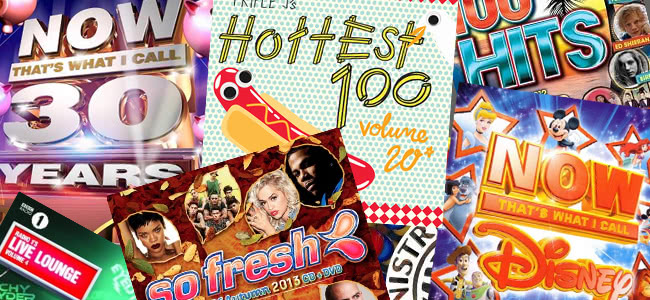Thought the compilation album had died when iTunes came along? Well, think again.
The latest industry figures suggest that the compilation album is back on the rise. As reported by The Independent, the British recorded music industry (BPI) has revealed that the sales of compilation albums have in fact grown by 7.2% in 2012. And a surprising amount of compilation sales were downloads, with 23.5% downloaded in 2012 compared to 16.3% in 2011.
The first three months of this year have seen a further 11.8% of growth with compilation sales making up an incredible 21% of all albums sold.
These stats come as a surprise to many with the compilation album seeming to have fizzled out in recent times. Having enjoyed success in the ’80s and ’90s, the pre-digital-era mixtape was a great way for punters to get all their favourite hits on the one CD without having to buy dozens of individual singles.
The compilation album was a cost effective solution for the music consumer and lucrative for record companies who made a pretty penny licensing their hit songs out for the albums. Compilation albums proved especially popular among the youth, who typically accounted for a large amount of sales due to their good value for money on their meagre cash flow.
Many of the juggernauts of the compilation album market fell by the wayside when digital came along, including Australia’s own long-running Hit Machine and 100% Hits brands, however there was some that did make the jump across to digital, finding a new lease of life on digital markets suc as iTunes. Now, as the new BPI figures show, many are currently reaping the benefits. The compilation album was a cost effective solution for the music consumer and lucrative for record companies who made a pretty penny licensing their hits
With single sales now available digitally for just a few dollars, it’s staggering that compilation album sales are now back on the rise when punters can pick and choose their own playlists. Yet for those a bit more strapped for cash it still provides something different on offer and could perhaps explain why the albums are still popular with younger demographics.
BPI Chief Executive Geoff Taylor credits the turnaround to trustworthy compilation brands and good value for money, with some albums running to more than 60 tracks. “For many years commentators have predicted the demise of the compilation,” said Taylor. “But these albums offer an expert filter – someone has done the work for you by picking the best of the genre.”
Much of this growth can be attributed to the popular UK compilation Now That’s What I Call Music series. Celebrating its 30th anniversary this year, the brand offers plenty of genre specific spinoffs, such as Now That’s What I Call Reggae and Now That’s What I Call Disney, with the series accounting for nine titles in the top 15 best-selling compilations last year.
The series, owned by EMI and Universal subsidiary UMTV, is a heavyweight of the industry with almost half (48.5% to be precise) of the digital sales of compilation albums belonging to the Now That’s What I Call Christmas variation. Total sales for Now… compilations reached an 11-year record high of 2.9 million last year, up from 2.7 million in 2011.
The Ministry Of Sound compilations are also still triumphant, with the south London nightclub seeing two of their releases making the annual compilation Top 20 in the UK and their ’90s Anthems collection currently #4 on the ARIA compilation album chart.
Here in Australia, the So Fresh compilation series is enjoying continued success with this year’s Autumn variation currently sitting at number eight on the iTunes album charts and #1 on the ARIA compilation album charts. Other brands dominating the Aussie market include the rejuvenated 100% Hits series and the Triple J Hottest 100, which continues to enjoy healthy annual sales.

































